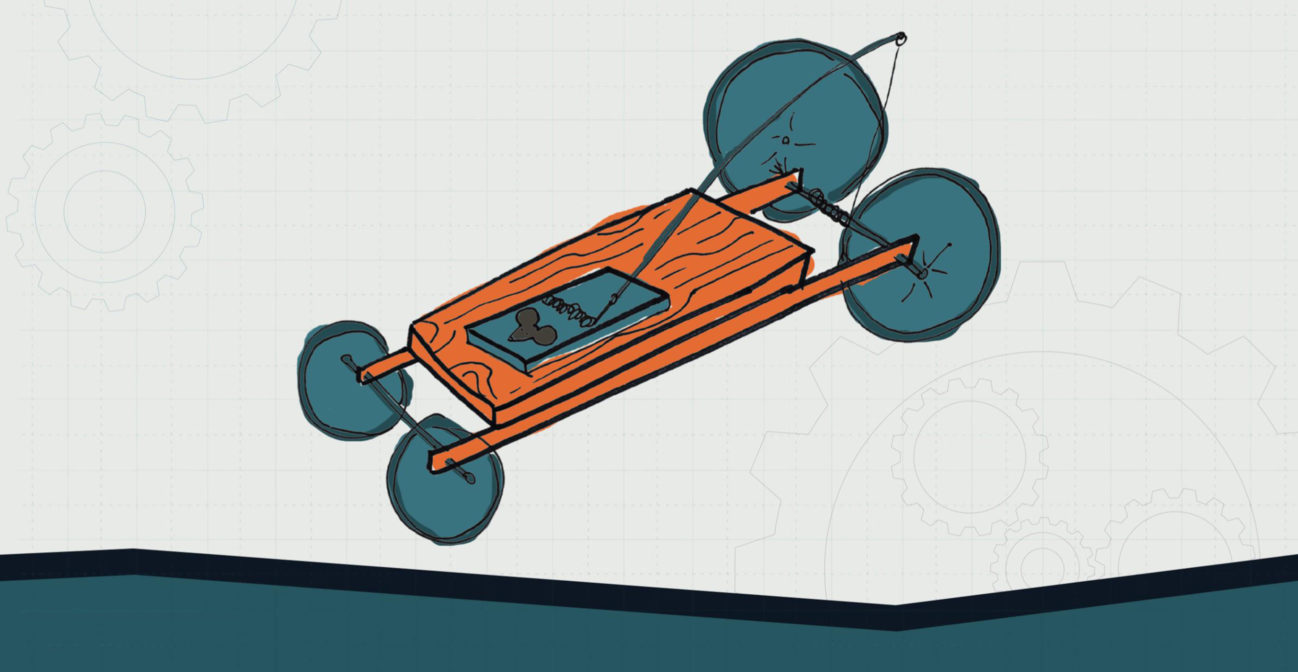Join us for conversations that inspire, recognize, and encourage innovation and best practices in the education profession.
Available on Apple Podcasts, Spotify, Google Podcasts, and more.

MIDDLE SCHOOL – LEVEL 3
Our STEAM labs are full of materials that can be used to build a great toy car. Build yourself an awesome vehicle that you will power with the spring of a mouse trap.
MATERIALS NEEDED:
❏ Wooden mouse trap
❏ Homemade toy car
❏ Rubber bands, both large and small
❏ 4 eye hooks
❏ 2 wooden dowels
❏ String
❏ Duct tape
DIRECTIONS:
Be sure to remove any metal teeth from the mousetrap. After you’ve built your car, leaving space for the mousetrap, mount it in the vehicle. Leave half an inch on either side of the mousetrap and use duct tape to fasten it to the car. Next, tie a piece of string to the swing arm of the mousetrap. The string should be long enough to reach the rear axle. Now, pull the trap open and wrap the string tight around the rear axle. When the trap arm is released, the string will pull, unwinding the string on the rear axle and propelling the car across the surface. Off to the races!!
OBJECTIVE: Students will be able to design and carry out a test to determine the velocity of their vehicle.
ESSENTIAL QUESTION(S):
NGSS CONNECTION:
MS-PS2-2. Plan an investigation to provide evidence that the change in an object’s motion depends on the sum of the forces on the object and the mass of the object.
COMMON CORE CONNECTION:
ELA/Literacy
RST.6-8.3 Follow precisely a multistep procedure when carrying out experiments, taking measurements, or performing technical tasks.
WHST.6-8.7 Conduct short research projects to answer a question (including a self-generated question), drawing on several sources and generating additional related, focused questions that allow for multiple avenues of exploration.
Mathematics
MP.2 Reason abstractly and quantitatively.
6.EE.A.2 Write, read, and evaluate expressions in which letters stand for numbers.
7.EE.B.3 Solve multi-step real-life and mathematical problems posed with positive and negative rational numbers in any form, using tools strategically. Apply properties of operations to calculate with numbers in any form; convert between forms as appropriate; and assess the reasonableness of answers using mental computation and estimation strategies.
7.EE.B.4 Use variables to represent quantities in a real-world or mathematical problem, and construct simple equations and inequalities to solve problems by reasoning about the quantities.
DOK:
Level 3: Strategic Thinking
Level 4: Extended Thinking